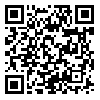BibTeX | RIS | EndNote | Medlars | ProCite | Reference Manager | RefWorks
Send citation to:
URL: http://journal.zums.ac.ir/article-1-1220-en.html
2- Medical Toxicology Research Center, Mashhad University of Medical Sciences, Mashhad, Iran ,
Background and Objective: Diabetic neuropathy is one of the most frequent complications of diabetes. Despite some studies, the exact mechanism of glucose neurotoxicity has not been fully elucidated. Increased reactive oxygen species (ROS) has been proposed as a possible mechanism. Crocus sativus L. (saffron) has been known as a source of antioxidants. Therefore, neuroprotective effect of saffron extract was studied in glucose-induced neurotoxicity, using PC12 cells as a suitable in vitro model of diabetic neuropathy. Materials and Methods: Cell viability was quantitated by MTT assay. ROS was measured using DCF-DA by flow cytometry analysis. Results: The result showed that glucose reduced the cell viability of PC12 cells. Saffron extract and GSH could decrease this toxicity. Glucose toxicity was consistent with increased ROS production which was reduced by saffron and GSH pre-treatment. Conclusion: These results suggest that the glucose-induced cell toxicity could be mediated through the generation of ROS. Due to antioxidant effects of Saffron, it could be considered in diabetic neuropathy treatment in animal models.
Received: 2010/08/31 | Accepted: 2014/06/23 | Published: 2014/06/23
| Rights and permissions | |
 |
This work is licensed under a Creative Commons Attribution-NonCommercial 4.0 International License. |




